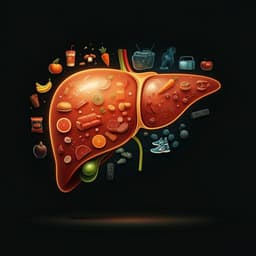
Chemistry
Revealing the nature of optical activity in carbon dots produced from different chiral precursor molecules
A. Das, E. V. Kundelev, et al.
Discover the fascinating world of carbon dots (CDs) synthesized from chiral precursors by researchers Ananya Das, Evgeny V. Kundelev, Anna A. Vedernikova, Sergei A. Cherevkov, Denis V. Danilov, Aleksandra V. Koroleva, Evgeniy V. Zhizhin, Anton N. Tsypkin, Aleksandr P. Litvin, Alexander V. Baranov, Anatoly V. Fedorov, and Elena V. Ushakova. This study unveils their high photoluminescence, chiral optical signals, and impressive stability, showcasing their potential in bio-applications!
Playback language: English
Related Publications
Explore these studies to deepen your understanding of the subject.







